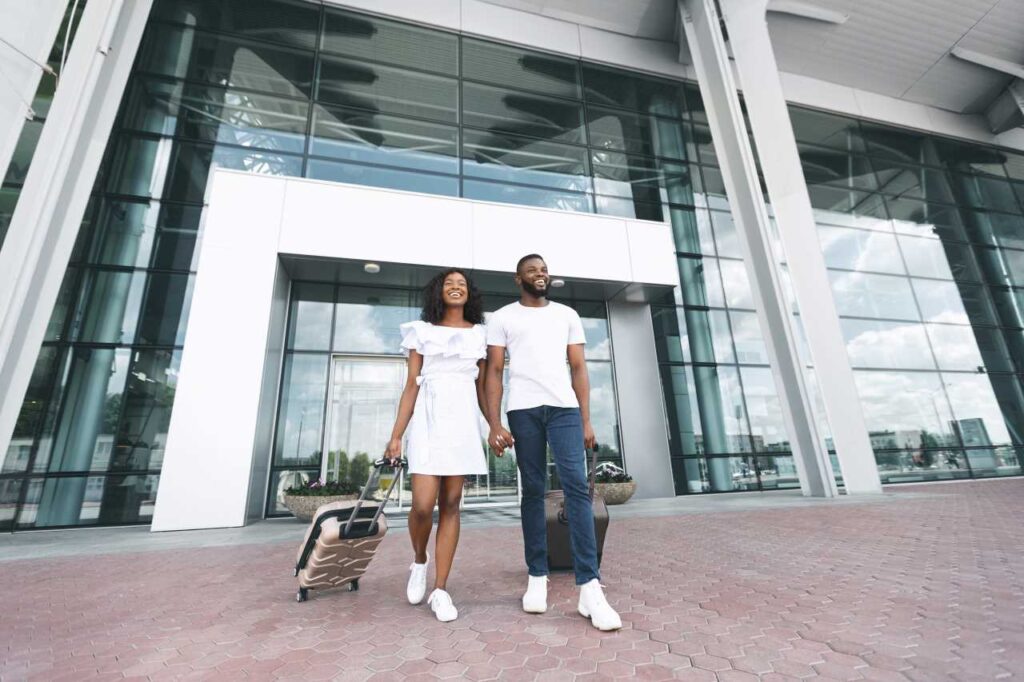When a primary visa holder comes to the United States, their family members or dependents may qualify for derivative visas, which allow them to join and live with the primary visa holder. These derivative visas are typically granted based on the relationship to the primary visa holder, covering close family members like spouses and unmarried children under 21. However, in situations where the family setup includes household members who don’t meet the traditional criteria for a derivative visa, there’s an option to apply for a B-2 visa classification. This guide explores the distinctions and the B-2 visa alternative for household members.
What Are Derivative Visas?
A derivative visa is a visa granted to family members of a primary visa holder, allowing them to accompany or join the primary visa holder in the United States. For instance, spouses and unmarried children under 21 of H-1B visa holders are eligible for H-4 derivative visas, tied directly to the primary visa status. These visas are only available for specific relationships, generally limited to immediate family members like spouses and minor children.
B-2 Visa Classification for Household Members of Nonimmigrant Visa Holders
The B-2 visa, primarily a tourist visa, can sometimes serve a unique purpose for household members who don’t qualify for derivative status. People traditionally use the B-2 visa for tourism, visiting family or friends, or medical treatment, but they can adapt it for household members such as cohabitating partners, elderly parents, or other extended family members who don’t qualify for a derivative visa but maintain a close, family-like relationship with the primary visa holder.
Common Types of Derivative Visas
Derivative visas allow family members of primary visa holders to immigrate to the United States under specific categories. The most common types include:
Family-Based Immigrant Visas: These visas include categories such as F2A (spouses and children of lawful permanent residents) and F2B (unmarried adult children of lawful permanent residents). Derivative beneficiaries can obtain green cards alongside the primary applicant if they are included in the initial visa petition, typically Form I-130.
Employment-Based Visas: Categories like EB2 and EB3 allow skilled workers, professionals, and other workers to immigrate based on employment. Derivative visas are available for spouses and children of the principal applicants, enabling them to join the primary visa holder in the U.S.
Refugee/Asylee Derivative Visas: Under the I-730 petition, family members of refugees or asylees can apply for derivative status. This allows spouses and children to join their family members who have already been granted refugee or asylum status in the U.S.
Eligibility Criteria for Derivative Visas
The eligibility for derivative visas is governed by specific criteria, which include:
Age Limits for Children: The Child Status Protection Act (CSPA) plays a crucial role in determining eligibility. Generally, a child must be unmarried and under 21 years old at the time of visa application. However, under CSPA provisions, a child’s age may be “frozen” based on the time their parent’s visa petition was filed, potentially allowing them to qualify even if they turn 21 during the process.
Relationship Requirements: To qualify for a derivative visa, applicants must demonstrate a qualifying relationship with the primary visa holder. This typically includes being a spouse or an unmarried child. The definition of “child” encompasses biological children, stepchildren, and adopted children.
Who Qualifies as a Household Member?
The Foreign Affairs Manual (FAM), which outlines procedures for U.S. visa eligibility, has a provision for household members who may apply for a B-2 visa. Qualifying household members typically include:
- Cohabitating Partners: Unmarried partners of the primary visa holder.
- Elderly Parents: Parents of the primary visa holder who require close care and companionship.
- Extended Family: Other relatives who live with and have a close connection to the primary visa holder, such as siblings or adult children.
To qualify as a household member, applicants must prove they share the same residence as the primary visa holder and have a genuine, close relationship. Casual friendships or distant relationships don’t meet this threshold for a B-2 visa under the household member category.
Application Process for a B-2 Visa
The B-2 visa is a non-immigrant visa for individuals wishing to visit the United States for tourism, vacation, or medical treatment. The application process involves several steps, including completing the DS-160 form, gathering supporting documents, and proving non-immigrant intent.
How to Complete the DS-160 Form
- Access the Form: The DS-160 form can be found on the Consular Electronic Application Center website.
- Fill Out the Form: Provide personal information, travel plans, and background details. Ensure accuracy to avoid delays.
- Upload a Photo: A recent digital photograph that meets U.S. visa requirements must be uploaded.
- Submit the Form: After completing the form, submit it online and print the confirmation page for your records and interview.
Supporting Documents to Include
When applying for a B-2 visa, you need to gather various supporting documents:
- Valid Passport: Must be valid for at least six months beyond your intended stay.
- DS-160 Confirmation Page: Proof of completed application.
- Visa Fee Receipt: Payment of the $185 application fee.
- Proof of Financial Means: Bank statements or proof of income to demonstrate you can support yourself during your stay.
- Evidence of Ties to Home Country: Documents like employment letters, property deeds, or family ties that indicate your intention to return home.
- Travel Itinerary: Details about your planned activities in the U.S., including accommodation and travel plans.
Proving Non-Immigrant Intent
To qualify for a B-2 visa, applicants must demonstrate their intent to return to their home country after their visit. This can be established through:
- Employment Verification: A letter from your employer confirming your job status and leave of absence.
- Property Ownership: Documentation proving ownership of property in your home country.
- Family Connections: Evidence of family members remaining in your home country.
Tips for a Successful Application
- Complete Documentation: Ensure all documents are complete and accurate.
- Be Honest in Your Interview: Misrepresentation can lead to denial.
- Prepare for Questions: Be ready to explain your travel purpose and ties to your home country.
Evidence of Ties to Home Country
Strong evidence of ties can significantly enhance your chances of approval. Consider including:
- Employment contracts or letters from employers.
- Proof of property ownership or lease agreements.
- Family photographs or documents showing dependents in your home country.
Duration of Stay on a B-2 Visa
Standard Length of Stay
Typically, B-2 visa holders are granted a stay of up to six months upon entry into the U.S., as noted on their Form I-94 Arrival/Departure Record.
Extensions and Renewals
If you need to stay longer than six months, you may apply for an extension:
- File Form I-539: This form is used for extending or changing nonimmigrant status.
- Submit Before Expiration: Apply at least 45 days before your current authorized stay expires.
- Provide Supporting Documents: Include reasons for extension and evidence of financial support.
Employment Restrictions on B-2 Visas
B-2 visa holders are not permitted to work in the U.S. This includes:
- Household Members: Family members accompanying a B-2 holder cannot engage in employment unless they have their own valid work visa.
Alternatives to a B-2 Visa for Household Members
If household members wish to work while in the U.S., they may consider:
- Employment Visas (e.g., H-2B): For temporary non-agricultural workers.
- Permanent Residency Options: If eligible through family sponsorship or employment-based categories.
B-2 Visa Denials: Common Reasons and How to Overcome Them
Mistakes to Avoid During Application
- Incomplete Forms: Ensure all sections are filled out accurately.
- Insufficient Evidence of Ties: Failing to provide strong evidence can lead to denial.
Reapplying After a Denial
If denied, review the reasons provided by the consular officer before reapplying. Address any issues raised in the previous application.
Tips for a Smooth Interview Process
Preparing the Household Member for the Consular Interview
- Understand Common Questions: Be prepared to discuss travel plans, ties to your home country, and financial means.
- Practice Responses: Conduct mock interviews to build confidence.
Key Questions They Might Face
- What is the purpose of your visit?
- How long do you plan to stay?
- What ties do you have in your home country?
Transitioning from a B-2 Visa to Another Status
If circumstances change while in the U.S., individuals may explore options such as:
- Change of Status Applications: Apply for a different nonimmigrant status (e.g., student visa) by filing Form I-539 before the expiration of their current status.
- Adjustment of Status: If eligible (e.g., through marriage), individuals can apply for permanent residency without leaving the U.S.
How Long Can a Household Member on a B-2 Visa Stay in the U.S.?
Typically, B-2 visa holders are allowed a stay of six months in the U.S., but household members may be eligible for a stay of up to one year if granted by U.S. Customs and Border Protection (CBP) at the port of entry. They can then apply for extensions in six-month increments if they wish to continue residing in the U.S. temporarily.
Important Considerations for Household Members on a B-2 Visa
- Nonimmigrant Intent Requirement: The B-2 visa is nonimmigrant, so household members must prove their visit is temporary, with no plans to remain in the U.S. long-term. They need to show intent to return to their home country, regardless of the primary visa holder’s immigration status.
- Limited Access: B-2 visas don’t provide access to benefits derivative visa holders might receive, such as work authorization or dependent privileges.
- Extensions and Validity: Household members can request extensions beyond the initial admission period, as long as they meet B-2 requirements and provide a valid reason for their stay.
Derivative visas are ideal for spouses and children of a primary visa holder, offering the flexibility to reside in the U.S. based on the primary visa’s validity. However, for family members or household members who don’t qualify as direct dependents, the B-2 visa presents an alternative for joining their loved ones in the U.S.
How Law and Visas Can Help?
At Law and Visas, our team of expert immigration consultants is here to make your travel to the US straightforward and successful. Whether you’re applying for a Green Card, Visitor Visa, or Study Visa, we handle every step from preparing your application to gathering the required documents.
Our immigration Consultants and Lawyers ensure that your application meets the highest standards, with no details missed. We’ll also keep you informed throughout the process and coordinate with the immigration office or embassy on your behalf.
Law and Visas has a strong record of helping clients secure the visas/permits they need in the US. Call us today at +234 812 5505 986 to learn how we can assist you





